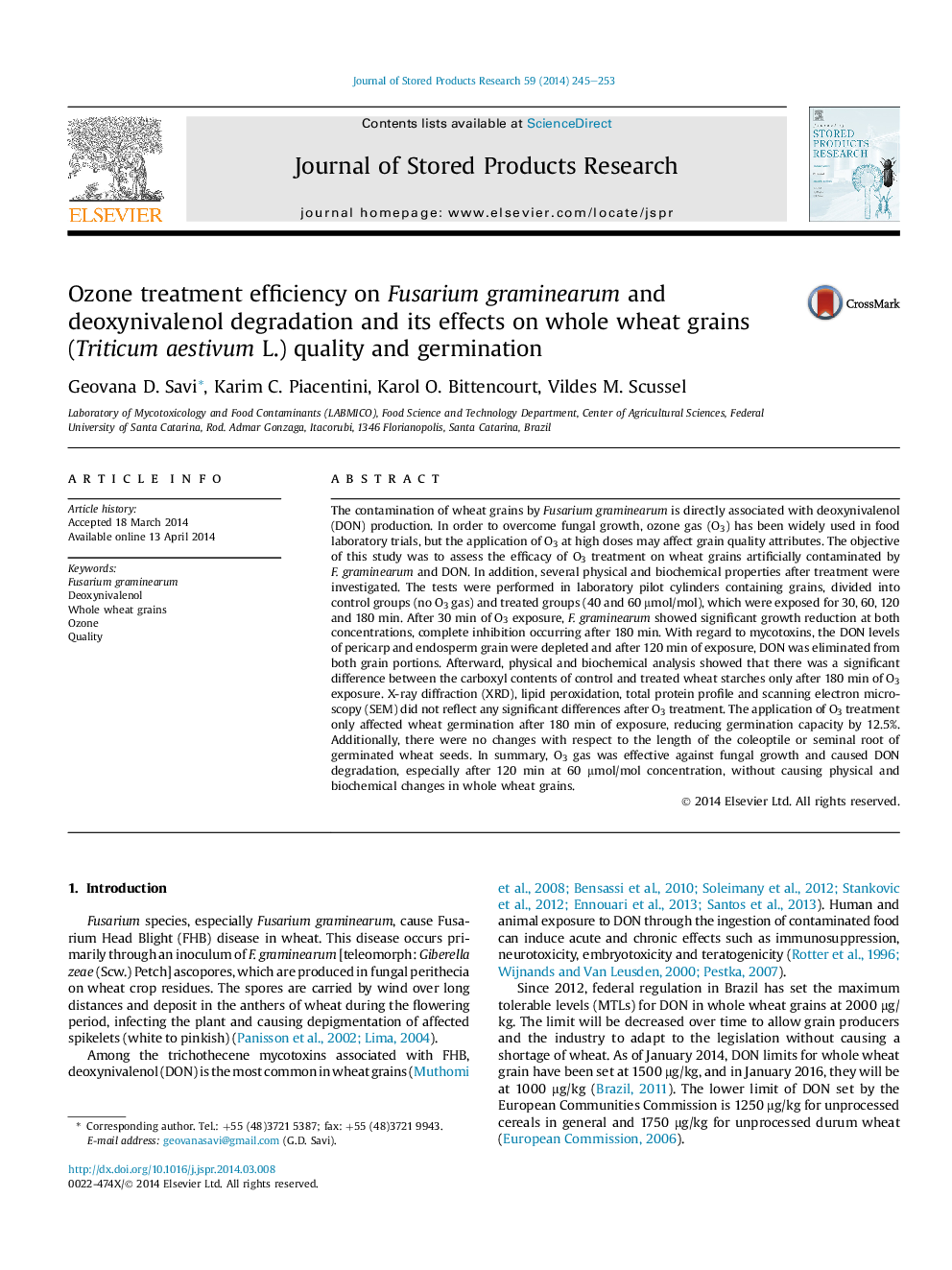| کد مقاله | کد نشریه | سال انتشار | مقاله انگلیسی | نسخه تمام متن |
|---|---|---|---|---|
| 6378464 | 1624929 | 2014 | 9 صفحه PDF | دانلود رایگان |

- O3 gas was effective in total DON degradation.
- DON levels in the grain endosperm were not easily eliminated by O3.
- After 180Â min of O3 exposure only the carboxyl content of wheat starch was affected.
- High exposure of O3 gas (180 min at 60 μmol/mol) may affect germination of wheat seed.
- Fungal viability and DON were degraded without significant physical or biochemical changes in grains.
The contamination of wheat grains by Fusarium graminearum is directly associated with deoxynivalenol (DON) production. In order to overcome fungal growth, ozone gas (O3) has been widely used in food laboratory trials, but the application of O3 at high doses may affect grain quality attributes. The objective of this study was to assess the efficacy of O3 treatment on wheat grains artificially contaminated by F. graminearum and DON. In addition, several physical and biochemical properties after treatment were investigated. The tests were performed in laboratory pilot cylinders containing grains, divided into control groups (no O3 gas) and treated groups (40 and 60 μmol/mol), which were exposed for 30, 60, 120 and 180 min. After 30 min of O3 exposure, F. graminearum showed significant growth reduction at both concentrations, complete inhibition occurring after 180 min. With regard to mycotoxins, the DON levels of pericarp and endosperm grain were depleted and after 120 min of exposure, DON was eliminated from both grain portions. Afterward, physical and biochemical analysis showed that there was a significant difference between the carboxyl contents of control and treated wheat starches only after 180 min of O3 exposure. X-ray diffraction (XRD), lipid peroxidation, total protein profile and scanning electron microscopy (SEM) did not reflect any significant differences after O3 treatment. The application of O3 treatment only affected wheat germination after 180 min of exposure, reducing germination capacity by 12.5%. Additionally, there were no changes with respect to the length of the coleoptile or seminal root of germinated wheat seeds. In summary, O3 gas was effective against fungal growth and caused DON degradation, especially after 120 min at 60 μmol/mol concentration, without causing physical and biochemical changes in whole wheat grains.
Journal: Journal of Stored Products Research - Volume 59, October 2014, Pages 245-253